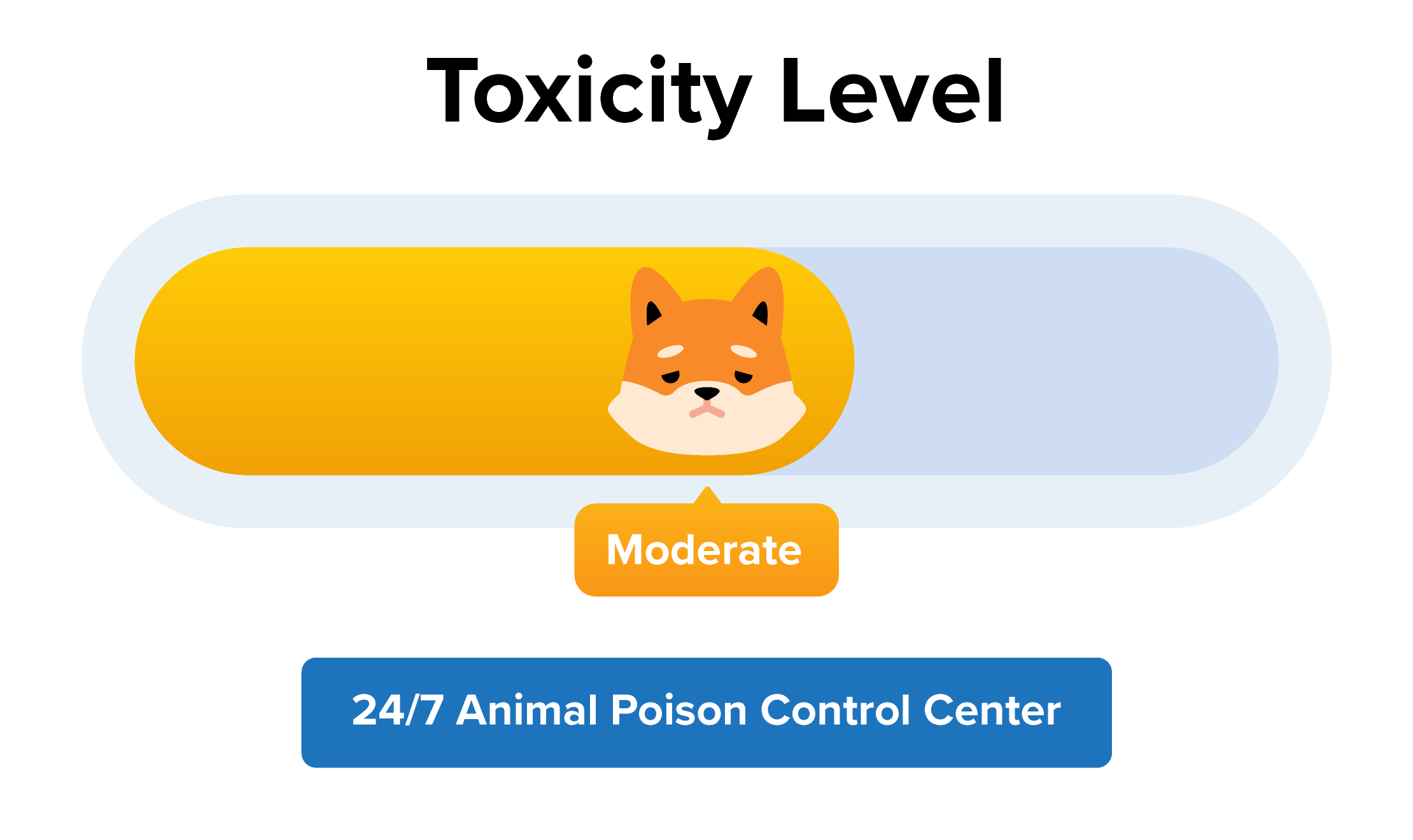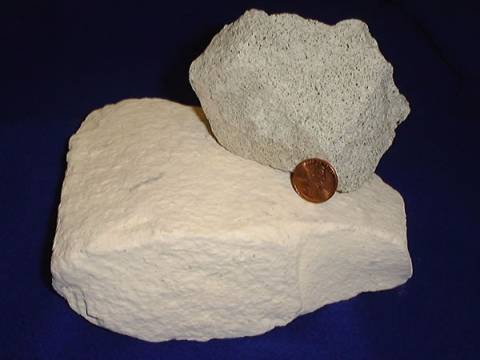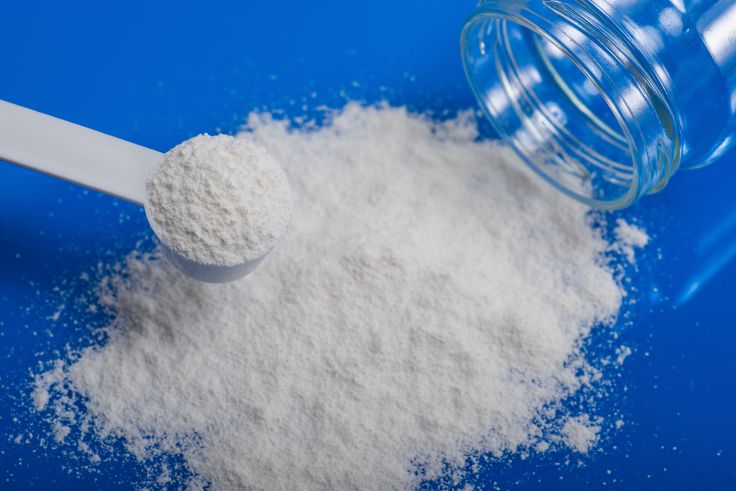Connect with a verified veterinarian in minutes. Licensed vets are available 24/7 to answer your questions. No need to worry about your furry family member.
Pet parents who have allergies are sometimes prescribed hydroxyzine. But what happens if a dog eats hydroxyzine?
Has your dog eaten hydroxyzine? Are you worried hydroxyzine will make your dog sick? If so, then you’ve come to the right place. We understand it’s scary when your dog eats something he shouldn’t.
In this article, we’ll take a look at hydroxyzine and whether or not it can make your dog sick! Let’s get started!
What is Hydroxyzine?
Hydroxyzine (also called Atarax or hydroxyzine HCL) is a medication called an antihistamine. It’s often prescribed by doctors to pet parents who have allergies that cause itchiness. This medication works by blocking histamine, which the body makes during an allergic reaction. Hydroxyzine can also be used to treat anxiety and other health issues.
The active ingredients in hydroxyzine are hydroxyzine, the hydroxylamine salt of the racemic mixture of monoamineoxidase inhibitors. Hydroxyzine is rapidly absorbed from the gastrointestinal tract.
Hydroxyzine pamoate is used as an antihistamine to treat allergies and pruritus (itching). Hydroxyzine is also used in the treatment of obsessive-compulsive disorder (OCD) and generalized anxiety disorder (GAD). Hydroxyzine may also be used for purposes not listed in this medication guide.
The central nervous system or CNS depressant effects of hydroxyzine are based on its ability to competitively inhibit monoamine oxidase, an enzyme that degrades monoamine neurotransmitters (such as norepinephrine, dopamine, and serotonin). This can result in a wide variety of CNS effects such as sedation, decreased psychomotor function, impairment of learning and memory, and anticholinergic effects.
When used for the treatment of allergic diseases such as atopic dermatitis or allergic rhinitis, hydroxyzine may cause a drowsiness effect. Patients should be advised to use caution when driving or operating machinery after taking hydroxyzine.
The concentrations of hydroxyzine in the plasma and tissues of dogs treated with hydroxyzine for 1 week were compared to the concentrations of hydroxyzine in the plasma and tissues of untreated dogs.
Formulations for dogs may contain hydroxyzine acetate as an inactive ingredient. This product is intended for use in dogs only and not in cats or other animals. Use of this product in cats may cause severe adverse reactions including clinical signs of sedation or depression and significant respiratory depression.
Hydroxyzine is a member of the hydroxylamine group of antihistamines. It is a non-sedating antihistamine that is not an H1 antagonist and does not antagonize the H2 histamine receptor. H1 receptors are located on smooth muscle, cardiac muscle, and certain glands. In fact, H1 receptors have been shown to be involved in a number of functions including cardiac relaxation, bronchodilation, smooth muscle contraction, gastric acid secretion, pupillary dilation and blood pressure regulation. H2 receptors are located on the gastric mucosa and are stimulated by histamine. In general it is thought that antihistamines that do not act as H1 antagonists (or H2 antagonists) may be better tolerated than other antihistamines when used for the treatment of allergic diseases such as atopic dermatitis or allergic rhinitis.
Hives are a rash that affects the skin and can cause itching. It can also cause swelling, redness, and pain. A hives rash can occur on any part of the body. Hives may be caused by an allergic reaction to something like a drug or food. Or they may be caused by a health condition. Sometimes hives can be caused by the sun. Hives may last for a few days or a few weeks. Allergens can be airborne or food related. Sometimes the allergy can be caused by contact with a specific substance.
Hydroxyzine is an antihistamine that blocks the action of histamine. The effects of hydroxyzine are more pronounced on the smooth muscle and cardiac muscle of the body, and less pronounced on the glands. Hydroxyzine also affects serotonin activity.
While hydroxyzine has been approved for use in humans, it’s also sometimes used in veterinary medicine to treat dogs. Hydroxyzine hydrochloride is approved for use in dogs and cats. It works to block histamine and is sometimes prescribed as a sedative. This medication is safe when used according to the veterinarian’s supervision.
This medication can cause sedation, so it’s not often prescribed for service dogs. It’s also not prescribed for dogs who have certain medical conditions such as:
- Glaucoma
- High blood pressure
- Lung or heart disease
- Enlarged prostate
- Dogs that have urinary or intestinal obstructions
- Pregnant or nursing dogs
However, what happens if a dog eats too much hydroxyzine?
Hydroxyzine & Dogs
The normal prescription dose of hydroxyzine for dogs is 1 mg per pound of body weight. This medication is usually prescribed between two and three times a day.
If your dog eats a larger dose of hydroxyzine, he could become very sick.
In addition, Benadryl® is a non-sedating antihistamine drug used to treat allergic reactions, hives, itching, motion sickness, and other conditions. Benadryl® is also used to prevent seasickness. For dogs, Benadryl® is available in both chewable and liquid forms.
When your dog chews the tablet, the medication is released into the bloodstream and quickly begins to work. The amount of benadryl required to treat your dog will vary from dog to dog and from condition to condition.
In some cases, the high doses required may cause a severe decrease in blood pressure or cardiac arrhythmias in some dogs. Therefore, if you notice any changes in your dog’s behavior after administering Benadryl®, stop giving it immediately and contact your veterinarian for advice about how to reduce the dosage safely. It is also important to note that some dogs may be allergic to Benadryl® and may develop a severe reaction when given the drug.
Benadryl® contains the following inactive ingredients: Croscarmellose sodium, hypromellose, lactose monohydrate, magnesium stearate, mannitol, microcrystalline cellulose, polyethylene glycol, sodium starch glycolate and titanium dioxide.

Review symptoms, medications & behavior to keep your pets healthy with a Vet Online in just minutes.
Ask a Vet Live NowSide Effects of Hydroxyzine
Injectable Hydroxyzine is used in dogs for the treatment of allergic conditions. It is a highly effective antihistamine, but like all antihistamines it can cause side effects. Side effects that may occur with Hydroxyzine include sedation, confusion, agitation, restlessness, and hyperactivity. Other side effects include depression, vomiting, and diarrhea.
The effects of histamine on the body can be very complex. Hydroxyzine does not have a direct effect on histamine receptors and it is unclear whether or not this medication may increase the effects of histamine on the body.
Precautions:
Before using Hydroxyzine injection in your dog be sure to check with your veterinarian about the right dosage for your pet. Your veterinarian will also want to know if you have any other animals at home that could be adversely affected by the medication (e.g., cats). Also ask your veterinarian about using this medication if you have any allergies or other conditions that could be worsened by this medication (e.g., asthma). Some are allergic to some antihistamines and should not use them without first consulting their physician (e.g., cat allergy).
Overdose:
Overdose symptoms include sedation or depression which may lead to lethargy or loss of consciousness; excitement and restlessness; hypersalivation; diarrhea; excessive panting; heart rate increase or rapid heart beat; tachycardia (rapid heartbeat); and nervousness. In the event of an overdose, contact your veterinarian immediately. We’ll talk about this more in the next section.
Drug Interactions:
It is important to tell your veterinarian if you are taking any prescription or over-the-counter medications (e.g., diuretics, birth control pills, corticosteroids, antihistamines, etc.) because adverse reactions may occur. Lactating animals should not receive this medication. It is also important to inform your veterinarian if you are taking any herbal remedies (e.g., St. John’s wort, ginkgo biloba, ginseng, etc.).
Missed Dose:
If you miss a dose of Hydroxyzine injection in your dog be sure to give it as soon as possible. If it is almost time for the next dose, skip the missed dose and return to your normal dosing schedule. Do not double the dose to catch up.
Storage:
Hydroxyzine injection should be stored at room temperature away from direct light and moisture. Do not freeze this medication; doing so may cause it to become inactivated and rendered ineffective.
Symptoms of Hydroxyzine Overdose in Dogs
You may notice these symptoms if your dog has eaten too much hydroxyzine:
- Loss of coordination
- Vomiting
- Dry mouth
- Lethargy
- Weakness
- Drowsiness
- Increased thirst/urination
- Lack of appetite
- Diarrhea
- Behavioral changes
- Excitability
- Seizures
- Sedation
If you notice these symptoms or signs of a severe allergic reaction (some dogs may be allergic to this medication), then call the vet immediately. This is an emergency.
Be sure to note how much of the medication your dog has eaten and tell the vet about any medical conditions your dog has. This information can be very helpful for the vet.
Treatment of Hydroxyzine Ingestion in Dogs
Hydroxyzine has been shown to have an anti-inflammatory effect in dogs and to have potential anti-parasitic effects. These effects are thought to be secondary to its antihistamine effects. Vaccines containing hydroxyzine have been found to be safe and effective in dogs. However, the manufacturer does not recommend use of hydroxyzine in dogs with known hypersensitivity to this drug.
Hydroxyzine may cause an increase in heart rate and blood pressure in dogs. This may lead to tachycardia and increased cardiac output. If hydroxyzine is used for long periods of time it may lead to congestive heart failure. Hydroxyzine may also increase the risk of seizures. Trouble urinating may also occur with long term use.
At the vet’s, they may try to induce vomiting if your dog has recently eaten hydroxyzine. Because there’s no antidote to hydroxyzine, the vet will treat your dog’s symptoms and provide support. Support may include supplemental oxygen, an IV for fluids, and more.
The good news is that dogs who receive prompt care after eating hydroxyzine have a higher chance of making a complete recovery.
Connect with a verified veterinarian in minutes. Licensed vets are available 24/7 to answer your questions. No need to worry about your furry family member.

Kim
Kim is a talented author, who loves animals especially dogs. She engaged in writing books and articles relating to animals a decade ago. Kim resides in Chicago with her husband and son. The family is the proud owner of a dog and a parrot (Jack and Lily). Kim wanted more than these two pets, but her husband put his foot down... She often visits elementary schools to talk to the kids about what she learned about pets and how they could learn from them.
Review symptoms, medications & behavior to keep your pets healthy with a Vet Online in just minutes.
Ask a Vet Live Now





